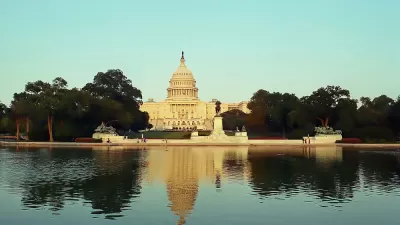The kicker in a recent article about the current realities of forest fires—and the cost of fighting them—in the United States: The federal government spends 624 percent more on fires than it did 20 years ago.
Roberto A. Ferdman reports on the insistent battle against forest fires in the United States: "More than 1.5 million acres of American forest have been burned to the ground so far this year, and that isn't even all that much. Last year, nearly 4.5 million acres were scorched; the year before, almost 9.5 million." Along a 20-year timeline, "[forest] fires have destroyed some 143 million acres since 1985, or roughly 5 million acres a year, on average."
All of that scorched earth also scorches the burden of American taxpayers: "The U.S. government now shells out some $2 billion a year just to stop them, according to the National Interagency Fire Center [pdf]. The total price, which includes wildlife preservation and land rehabilitation, is likely $1 billion to $2 billion more than that, according to estimates by research firm Headwaters Economics."
The rising cost of forest fires has left the Forest Service and the Department of the Interior with significant budget shortages and has even coined the frightening term "fire borrowing" to describe the duct-tape funding practices of federal forest fire measures.
FULL STORY: The cost of America’s forest fires has more than quintupled in the past 20 years

Study: Maui’s Plan to Convert Vacation Rentals to Long-Term Housing Could Cause Nearly $1 Billion Economic Loss
The plan would reduce visitor accommodation by 25,% resulting in 1,900 jobs lost.

North Texas Transit Leaders Tout Benefits of TOD for Growing Region
At a summit focused on transit-oriented development, policymakers discussed how North Texas’ expanded light rail system can serve as a tool for economic growth.

Why Should We Subsidize Public Transportation?
Many public transit agencies face financial stress due to rising costs, declining fare revenue, and declining subsidies. Transit advocates must provide a strong business case for increasing public transit funding.

How to Make US Trains Faster
Changes to boarding platforms and a switch to electric trains could improve U.S. passenger rail service without the added cost of high-speed rail.

Columbia’s Revitalized ‘Loop’ Is a Hub for Local Entrepreneurs
A focus on small businesses is helping a commercial corridor in Columbia, Missouri thrive.

Invasive Insect Threatens Minnesota’s Ash Forests
The Emerald Ash Borer is a rapidly spreading invasive pest threatening Minnesota’s ash trees, and homeowners are encouraged to plant diverse replacement species, avoid moving ash firewood, and monitor for signs of infestation.
Urban Design for Planners 1: Software Tools
This six-course series explores essential urban design concepts using open source software and equips planners with the tools they need to participate fully in the urban design process.
Planning for Universal Design
Learn the tools for implementing Universal Design in planning regulations.
City of Santa Clarita
Ascent Environmental
Institute for Housing and Urban Development Studies (IHS)
City of Grandview
Harvard GSD Executive Education
Toledo-Lucas County Plan Commissions
Salt Lake City
NYU Wagner Graduate School of Public Service





























